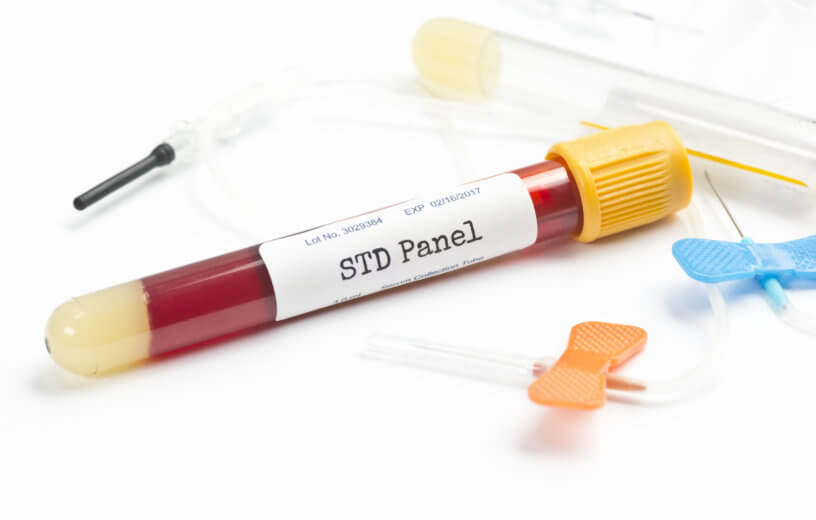WASHINGTON — Sexually transmitted infections (STIs) are reaching epidemic levels throughout the United States, a new report reveals. Officials with the Centers for Disease Control and Prevention (CDC) have released results of the latest STD Surveillance Report, and the numbers are disturbing. The data shows a concerning trend among sexually active Americans, with syphilis and chlamydia cases skyrocketing to record highs.
In fact, in the last five years alone, the CDC reports that cases of syphilis have soared by nearly 80 percent. More specifically, cases of congenital syphilis have exploded by a staggering 183 percent during that time.
Cases of gonorrhea have also risen by 11 percent since 2018. Although chlamydia numbers have dropped over the last five years (-6.2%), there were still 1.65 million cases reported in 2022, far more than any other STI in this report by the CDC.

3 Tips For Preventing Sexually Transmitted Infections:
- Practice Safe Sex: Use condoms during sexual activity, including oral, anal, and vaginal intercourse, to significantly reduce the risk of transmitting or contracting STIs. Condoms act as a physical barrier, preventing the exchange of bodily fluids, which is a common way STIs spread.
- Regular Testing and Communication: Regularly get tested for STIs and encourage your sexual partners to do the same. Open communication about sexual health status and history with partners is crucial. Early detection of STIs can lead to more effective treatment and reduce the risk of spreading the infection to others.
- Limiting the Number of Sexual Partners and Being Selective: Reducing the number of sexual partners and choosing partners who have been tested and are known to be STI-free can significantly decrease the risk of contracting an STI. Mutual monogamy, where both partners agree to only have sexual relations with each other, also reduces the risk.
The National Coalition of STD Directors (NCSD) warns that the number of sexually transmitted infections may likely be worse when officials collect the most recent data from 2023. They note that these trends show an “out of control” epidemic that is also leading to hundreds of deaths, along with thousands of new infections.
“The 2022 data shows hundreds of lives lost and millions of infections, but it doesn’t yet reflect the workforce cuts and drug shortages states have experienced in the time since – the reality is that the 2023 data will be worse,” NCSD officials write in a media release.
“Our nation is facing a rapidly deteriorating public health crisis with real lives at stake. STIs – especially syphilis – will continue to spiral out of control until the administration and Congress provide communities with the funding they need to provide the most basic screening, treatment, and prevention services.”
CDC officials point out that the nation’s “syphilis epidemic” is particularly concerning. During the five-year window from 2018 through 2022, cases of primary and secondary (P&S) syphilis skyrocketed by 68 percent. These are the most infectious stages of the disease.
Laura Bachmann, MD, MPH, the acting director of the CDC’s Division of STD Prevention, notes that these stages of syphilis are fueling an epidemic of congenital syphilis among women, which threatens the health of their babies.
What Is Syphilis?
- Syphilis is caused by the bacterium Treponema pallidum. It is primarily spread through sexual contact, but can also be transmitted from mother to child during pregnancy.
- Syphilis progresses through several stages if untreated: primary (sores at infection site), secondary (rash, fever, swollen lymph nodes), latent (no symptoms but the bacteria remain in the body), and tertiary (which can occur years later, causing severe damage to the entire body).
- Syphilis can be diagnosed through blood tests. It is treatable and curable, especially in its early stages.
“The STI field has reached a tipping point. We have long known that these infections are common, but we have not faced such severe effects of syphilis in decades. Recent public health emergencies diverted program resources and threatened the health of those already disproportionately affected by STIs. We must move now to pick up the pieces,” Bachmann writes in a statement.
As for where Americans are seeing the majority of these STIs, the CDC report reveals that patients in Arizona, California, Florida, Louisiana, and Texas account for 57 percent of all congenital syphilis cases reported. Racial and ethnic minorities have also been disproportionately affected by the STI epidemic, according to CDC officials. Specifically, African American patients made up 30 percent of all congenital syphilis cases in 2022 alone.
